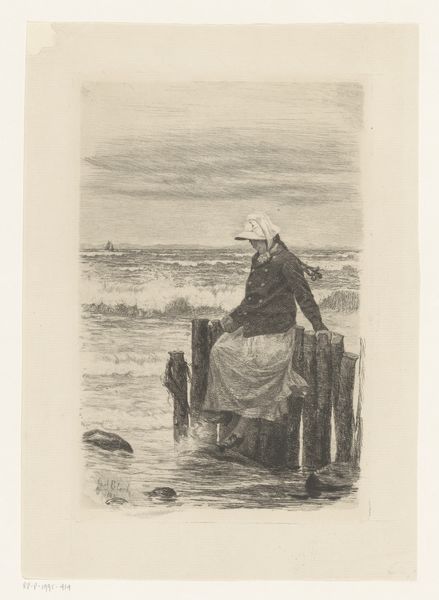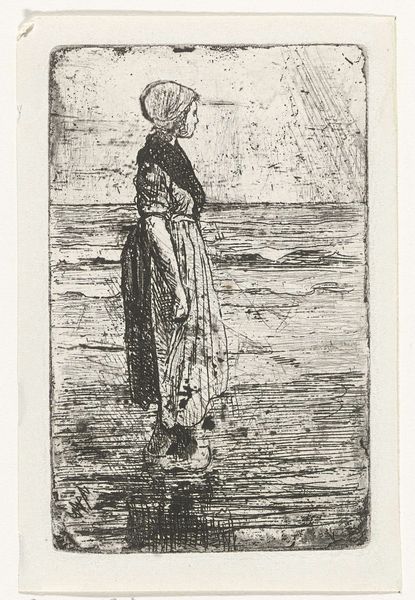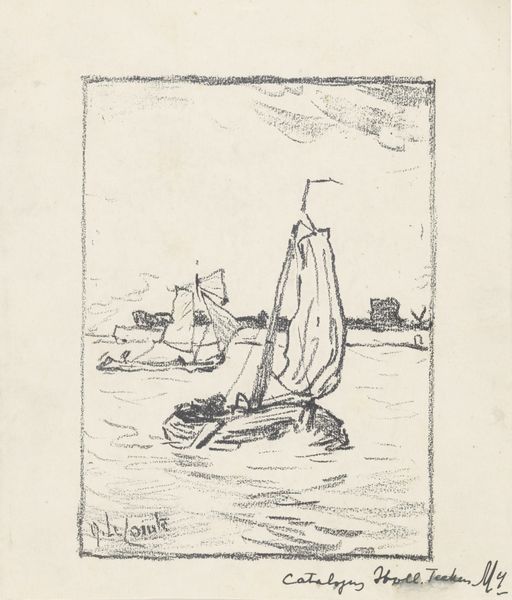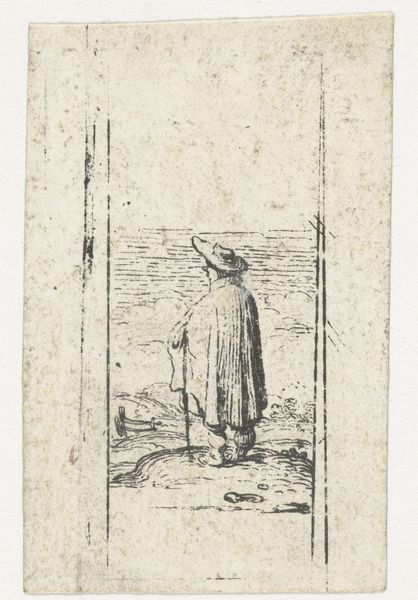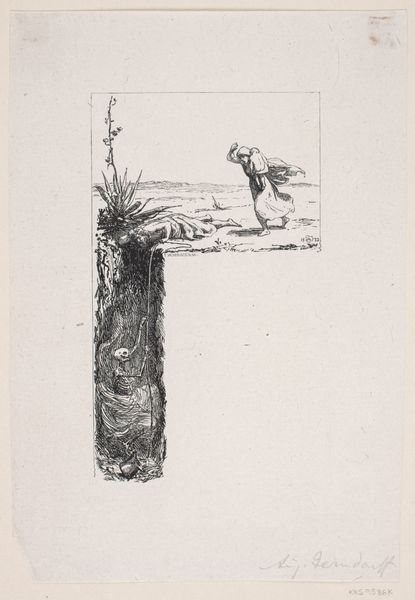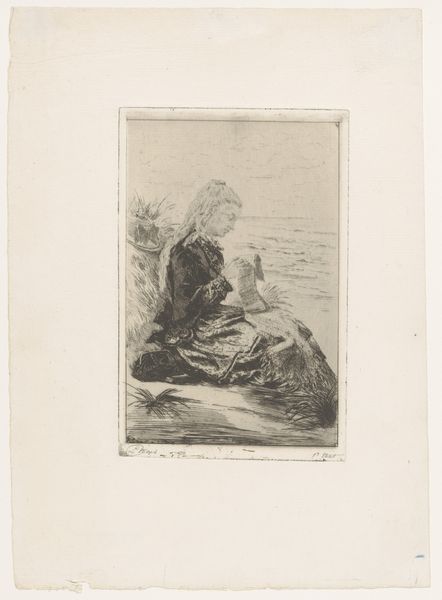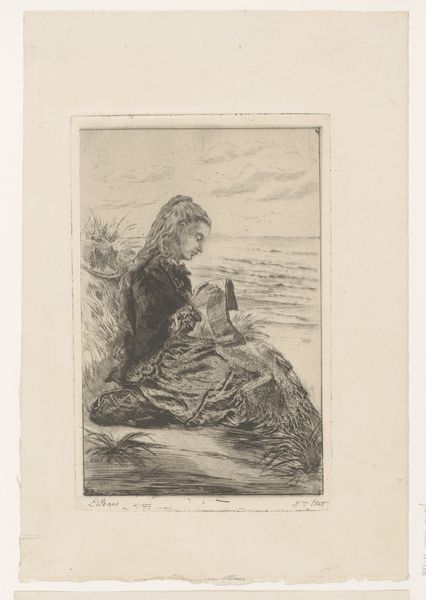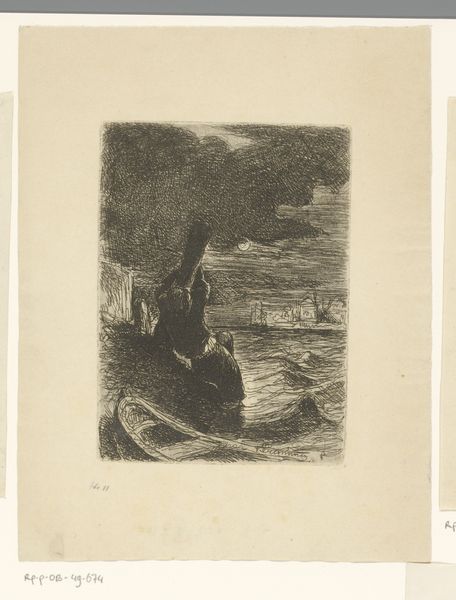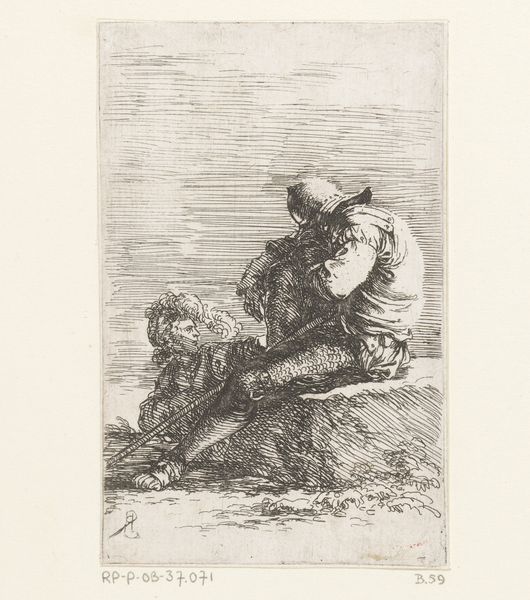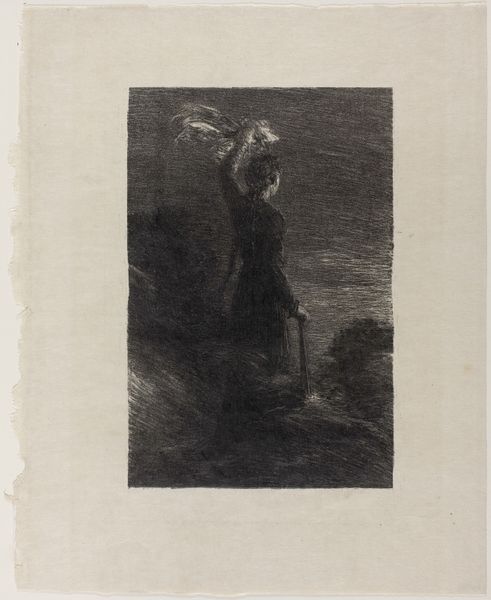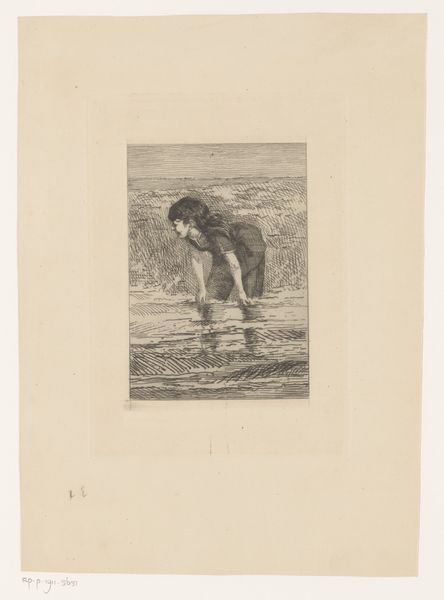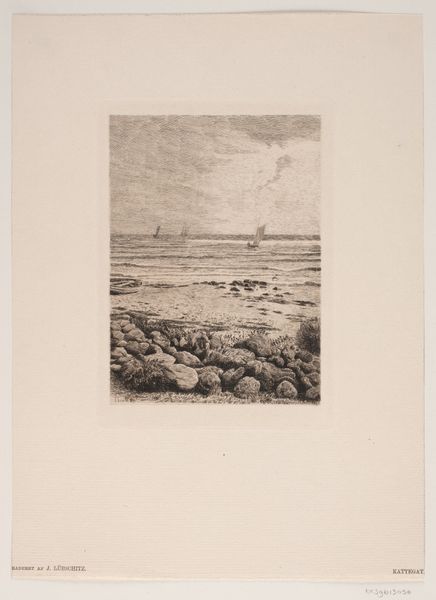
print, etching
#
portrait
# print
#
impressionism
#
etching
#
landscape
#
genre-painting
#
realism
Dimensions: 262 mm (height) x 186 mm (width) (bladmaal), 218 mm (height) x 145 mm (width) (plademaal)
Curator: Here we have Carl Bloch's "Pigen ved bolværket," or "The Girl at the Bulwark," an etching created around 1885. It resides here at the SMK, the Statens Museum for Kunst. Editor: My immediate reaction is a sense of quiet melancholy. The muted tones and the girl's solitary pose certainly evoke a feeling of introspection, almost as if she’s communing with the sea. Curator: The use of etching, a printmaking technique involving acid to create lines on a metal plate, adds to the atmosphere, doesn’t it? It allows for a delicate rendering of the scene, from the rough texture of the wooden pilings to the turbulent sea. We can really observe how landscape traditions find themselves adopted within an early impressionistic style, softening lines, playing with shade. Editor: Absolutely. It’s a captivating technique to portray the image, imbuing this girl with an ethereal vulnerability. I wonder about her presence there. Is she a symbol of resilience, confronting the vastness of the ocean and the challenges of life? Or is she just simply watching the shoreline as fishing traditions face disruption? Curator: One can certainly view the work as a symbol of female resilience. But her posture… that downward glance feels more complicated to me. Consider, however, that harbor scenes frequently held significance in Scandinavian art, often tied to national identity and maritime power. There are threads that tie her to maritime histories. Editor: Yes, but isn't it also crucial to see how gender roles influenced the lives of women within these coastal communities? It may be a landscape, but in it the human element invites us to consider labor and inequality. The girl's traditional attire may even symbolize her role within a specific cultural and economic structure. Curator: A cultural marker, certainly, hinting at her socio-economic position. And Bloch's ability to evoke mood and cultural associations is truly skillful. Editor: It encourages us to think about representation and visibility, who gets remembered in history, and the hidden narratives behind so many images of women throughout the ages. Curator: Indeed. Ultimately, the image embodies how personal reflection and broad historical forces converge to create deeply felt art. Editor: Exactly. A poignant reminder to look deeper into how societal structures, gender roles, and artistic representations intertwine, shaping how we perceive both art and reality.
Comments
No comments
Be the first to comment and join the conversation on the ultimate creative platform.
